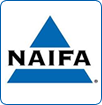The decision to buy life insurance is not difficult but selecting the right type of policy is critical to making sure your family or business is adequately protected. When considering return of premium term insurance there are a number of factors that should be reviewed. Following is a checklist of the most important things to consider when buying ROP term insurance.
- Price. Don’t make the mistake of buying a return of premium policy based on price alone. Scrutinize all of the items on this checklist as there are likely reasons to pay slightly more for a better company or more comprehensive benefits and policy options.
- Insurance Company Financial Strength. The market volatility since the year 2000 has magnified the importance of selecting a very highly rated insurance company. This is especially true when buying return of premium life insurance as there is a cash value associated with ROP policies. Before buying any policy, make sure you checkout the independent financial ratings of the companies you are considering. These ratings can be found at the following independent rating services: AM Best, Standard & Poor’s, Moody’s, Fitch and
Weiss Research. You may also contact MEG Financial at (877) 583-3955 for ratings and comparisons. - How Long Are Do You Need the Coverage? In most cases, it makes very little sense to buy an ROP term policy unless you are going to keep the policy until the end of the level term period. The reason for this is if the policy is surrendered or lapses prior to the end of the level period, there will be a significant reduction in returned premiums. In fact, if you are not going to keep the ROP term policy for the entire level term period, you are much better off with an ordinary level term life insurance policy without the ROP feature.
- Cash Surrender Value– Most return of premium policies begin building cash value in the 6th policy year with the cash surrender value gradually increasing annually to equal 100% of all premiums paid at the end of the level term period. With most ROP policies, it takes several years for the cash surrender percentages to be meaningful. For example, for a 20-year ROP policy, if you surrender the policy in year 15 you may only receive 50% of all premiums paid. Before buying a policy, it is wise to review the ROP cash surrender percentages so that you are aware of the actual guaranteed cash surrender values. For an example see, sample schedule for return of premium cash surrender values.
- Cash Value Option. Some companies offer two ROP schedules for returning premiums: a basic cash value option and an enhanced cash value option. The basic cash value option is less expensive and returns a slightly lower percentage of premiums beginning in the 6th policy year but guarantees a 100% return of premiums at the end of the level term period. The enhanced cash value option allows you to pay a slightly higher premium to accelerate the percentage of premiums returned in the early and middle years. This option provides for the use of greater cash values in early years but also returns 100% of all premiums at the end of the level term period. The enhance option costs more but not significantly more in some case. You need to consider both cash value options if available. For more information see, comparison schedule of the basic cash value and enhanced cash value options in return of premium term policies.
- Policy Loan Options. Most ROP term policies offer a loan option after the 6th policy year. In other words, if you need cash, you have an option to borrow against the cash surrender value in the policy. If a loan is taken, interest must be paid on any outstanding loan balance. Each company offers different loan terms. Therefore, you need to review the loan options available before you buy any ROP term life policy.
- Underwriting. Underwriting is the process where the insurance company evaluates you to determine your rate for life insurance. Some of the important underwriting considerations include your health and medical history, avocations, MVR, foreign travel, hobbies and lifestyle issues. Every insurance company uses their own specific underwriting guidelines. Therefore, the choice of policies will be affected by the way each respective company evaluates your health. For more detail, see the general life insurance underwriting guide.
- Conversion options. Depending on your age, most companies offer a conversion privilege which allows you to “convert” or exchange a term policy for a whole life or universal life policy without proving your health. The conversion option is invaluable if your health changes and renders you uninsurable. If everything else is constant, the life insurance company offering the longer conversion period is the better choice.
- Policy Riders. Riders are optional benefits that may be added to your policy to meet additional needs. Most companies issuing return of premium policies offer riders. Optional riders available may include children’s term insurance, waiver of premium for disability, accidental death and dismemberment and accelerated death benefits.
Summary
If you are looking at buying return of premium term life insurance, you need to look beyond the price of the policy. Unlike simple level term life insurance, ROP term builds cash value. Therefore, other considerations such as company financial strength, loan options and cash surrender values are very important. At MEG Financial, we want to help you understand the policy differences and determine which policy is best given your circumstances. Call MEG Financial today at (877) 583-3955 or simply request a personalized return of premium term life quote. MEG can help you make the right policy choice!
- Comparing Return of Premium Term and Level Term Life Insurance
- Advantages and Disadvantages of ROP Term Life Insurance
- Why Buy ROP Term Insurance?
* MEG Financial is not providing tax or legal advice. If you have tax or legal questions, please contact your accountant or attorney.

 Speak with an experienced advisor!
Speak with an experienced advisor! 


